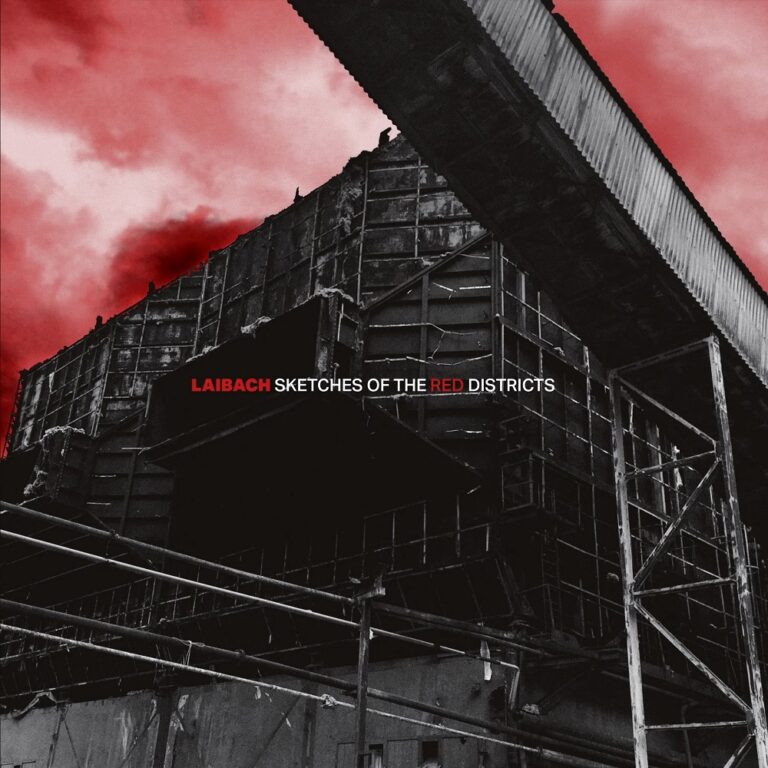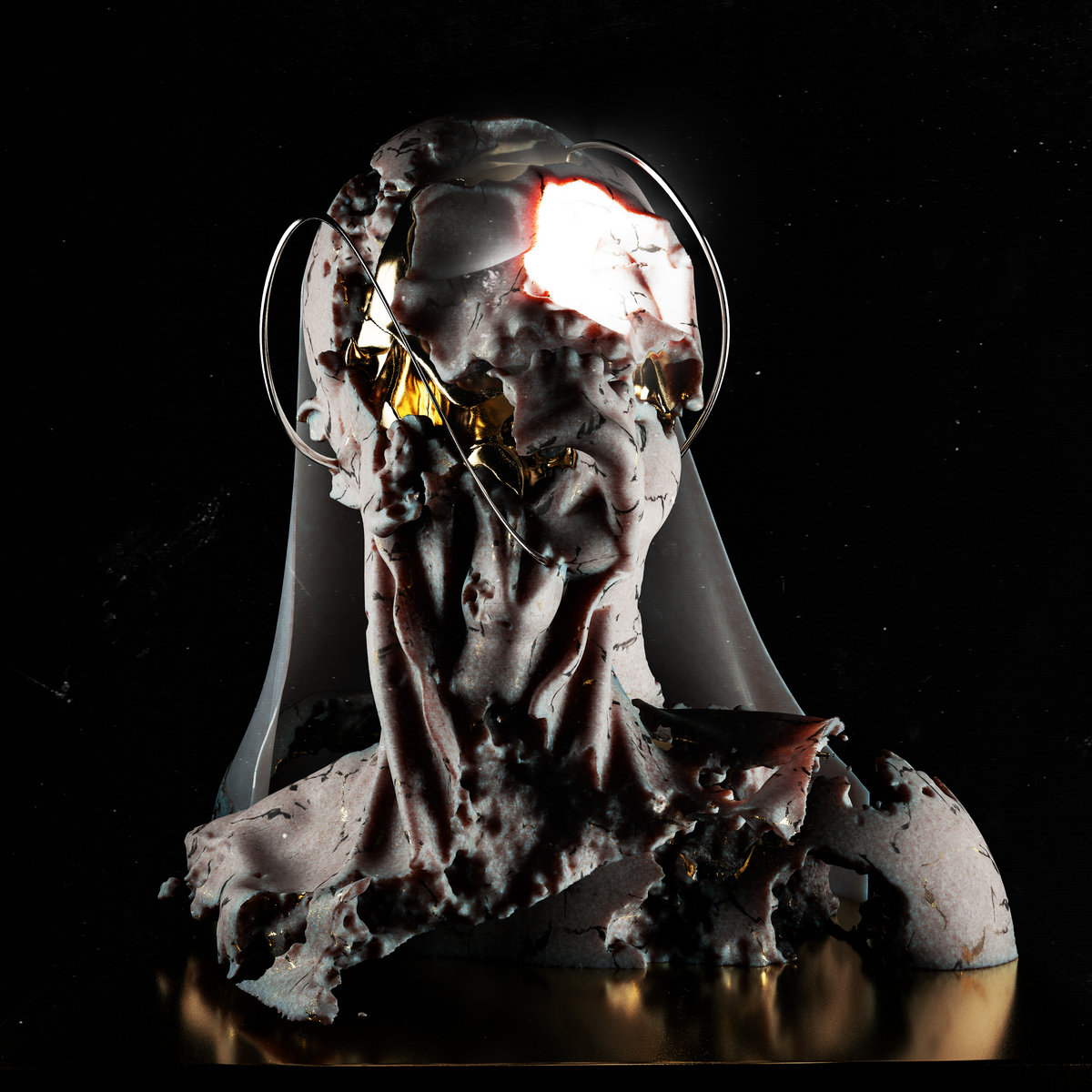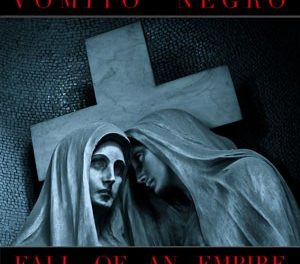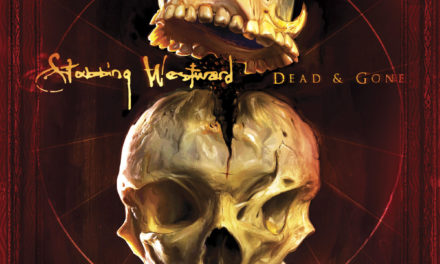And so here we are, the Top 5 of 2023. Not much of a preamble required; if you haven’t read entries 25-16 and 15-6 of our list you may wish to do so before digging into the releases below, and a reminder that our general thoughts on the Top 25, along with some honourable mentions and statistical examinations of this year’s honourees will take place on our round-up podcast on Friday, at which point we’ll be going on our holiday hiatus for a couple weeks. Got all that? Cool. As always, we’ve love to hear what your favourites were this year, drop ’em in the comments below. Let’s get down to it.


5. Camlann
DISMANTLE!
Oberwave Records
Indonesian darkwave duo Camlan move quickly; DISMANTLE! is their fourth LP since their emergence in 2019, a fact that is doubly impressive due to their youth (Fauzan Pratama and Ony Godfrey were both in their mid-teens at the time of their earliest releases). And yet they’ve not only persevered but planted a flag with their 2023 album, moving beyond the standard-issue goth and new wave aesthetics of their preceding material and becoming a genre-fluid powerhouse, fueled by socialist politics and fearless experimentation. You know of many other goth records in 2023 that can swerve from electro-darkwave (“Your Death is My Glory”) to rocksteady (“Politician Superstar”) to radio-ready tropical pop (“Proletariat Wishes”) and toss off NRG rap breakdowns straight out of 1990 (“This World is Ugly”) like it’s nothing? It’d be a great record based purely on ambition if it wasn’t also replete with tremendous hooks and unique a uniquely confident charm all its own. Smashing a bunch of sounds that seem incompatible together is a novelty, crossing the streams like it’s the most natural thing in the world is another, altogether special thing, and one we should all be celebrating. Read our full review.

4. Zanias
Chrysalis
Fleisch Records
We’ve said for years that those working pop elements into EBM or industrial tracks wield a double-edged sword; they can offer fresh perspectives on sounds we’ve become overly familiar with, but they’ll also be judged by the high standards of pop production and immediacy. No record’s gamble along those lines paid off this year like the third Zanias LP. From the skittering, hauntological vocal samples which guide “Simulation” through the sobering and confessional “Burial” to the homey, almost alt-folk vibes of “Teatree”, hints of Alison Lewis’s extant work in minimal wave, techno, body music, and electro-acoustic experimentation can be found throughout Chrysalis, but the bright and immediate spark of comforting melody and smooth, enveloping production which runs throughout is something entirely new. That sparkling, revitalizing sound is a perfect accompaniment to the record’s themes of coming out on the other side of club excess and toxic relationships, and trying to attend to what is real, true, or substantive in a world built of layer upon layer of artifice (a subject Lewis eloquently elaborated on with us earlier this year). If part of pop’s function has always lain in emotional succour, an empathetic voice reaching out from the speaker, Chrysalis was a ray of light (pun intended) for the Berghain generation as they weave their way home after a heavy night, and no other record this year made us feel more hopeful about facing all tomorrow’s mornings. Read our full review.

3. Laibach
Sketches Of The Red Districts
God Records
Multiple books have been written about Laibach and yet a totalizing picture of the group’s now 40+ year corpus still eludes us all. It’s best to discuss each period, action, or album on its own merits lest one get lost in a Pepe Silva web linking Iranian history with taking Rogers & Hammerstein to Pyongyang. Sketches Of The Red Districts is a record of Laibach returning to their roots, and not just the roots of centuries old political conflict in their homelands, now heavily obscured by palimpsests of war, ideology, and perhaps most troublesome of all, irony. Indeed, in addition to excavating the history of brutal combat between communists and fascists in their hometown of Trbovlje (with which the earliest Laibach actions were meant to symbolically align), Sketches is the sound of Laibach returning to their earliest and most harsh sounds. The raw scrapes and machine-gun clatter of their self-titled LP and first tapes are unearthed on “Nekaj Važnih In Načelnih Misli O Bodoči Usmeritvi” and other pieces, like abandoned industrial or military machinery pressed back into service after decades. Like other latter-era works by equally lauded industrial pioneers like X-TG and Drew McDowall, Sketches is no mere nostalgia trip but rather finds Laibach as masters of their craft applying all of the lessons they’ve learned in the interceding decades to the pure and undiluted aesthetics and interests of their youth, now with new depth and musical instincts (if still not traditional “musicality”). No other industrial record this year lured us in as fully with the beauty and power of its noise, and no other record we’ve heard in a long, long time reminded us of why it is that we find such noise to be so beautiful. Listen to our full discussion of the record.

2. Randolph & Mortimer
The Incomplete Truth
Surface Reality
Randolph & Mortimer’s Sam Evans conceived his Sheffield-based project’s 2023 LP as a kind of antidote to futility; following a brush with death at work, Evans set out to make a record that took his politically minded, industrialized rave-ups to arena-shaking stature. And damn if The Incomplete Truth didn’t pull it off, the now or never urgency of its inspiration infused in every beat, every synthline, bass guitar lick and rhythmic sample arrangement. “Self-Medicator” slams drums and synths with a quantized force that blurs them into one, the desperation and futility of the struggle to keep pace with our eat-sleep-work routine embodied in music, only for the title track to part the clouds with a truth to power groove straight from the Hacienda’s golden era, carried down from the heavens by an angel in loosefit jeans. Those kinds of call and response aesthetics are the record’s stock in trade, funky blasts of vocal cut-ups and syncopated drums (“Yuppies”) downshifting to dubby digital psychedelia (“Everything Was Forever”) before building to le-petit-mort climaxes of fleeting and euphoric power (“Becoming Inoperative”). The message, distilled from the project’s history of critique and the industrial sounds of their hometown is clear: subsistence isn’t the same thing as living, and we owe it to ourselves and each other do as much of the latter as we can. The Incomplete Truth is the sound of joyous, life-affirming rebellion. Read our full review.

1. Lana Del Rabies
Strega Beata
Gilgongo Records
If you wanted to find an entryway into processing the vast cathedral of grief, sorrow and mercy that is Lana Del Rabies’ Strega Beata, you could do worse than to take in the quiet, mid-record piece “Grace the Teacher”. Soft thrumming drones and ghostly violins swirl around Sam An’s voice as she slowly intones the hard lesson of the titular biblical concept; to attempt to live in grace is to live in the long shadow of its absence. As such, the third LP from the Arizona artist offers no easy answers, nor much in the way of balms for its litany of grievous wounds. Conceived at a time when An was ready to retire the Lana Del Rabies project and its history of power electronics and noise, the record that became metastasized during the pandemic into a thing of cavernous sorrow, with An at the center struggling to resolve, or at least address the forces that pull us away from the light.
The drones and waves of static that have been Lana Del Rabies’s stock in trade are a natural avenue for this kind of meditation, although the absolute leap that An makes with this album takes those things into an expressive territory as yet unheard in her work. Gone are the lo-fi and compressed to flatness noise, the extremity for its own sake aesthetics replaced by a sculpted and considered assemblage of pianos, low rumbling basses and voicework that is both beautiful and terrifying at measures. It’s hard not to think of Diamanda Galas during the nine minutes of decayed percussion and intense rage that outlines “Mourning”, if only for the terrible majesty of the sounds, images and ideas on display. Strega Beata also takes the tones and mood if not full structure of liturgical and middle ages vocal music, and rather than placing them in a state of (un)holy exception totally enmeshes them within the lattices of noise and texture Am has been developing since the beginnings of the LDR project (note the album art, suggesting classic portraiture of a saint comprised of biomechanical morass and framed by a metallic halo). When these seemingly disparate sources jockey and shift for focus, as on “Master”, it’s less a conscious statement on genre or influence as it is a dialectic between similarly morbid perspectives. Few people spend as much time meditating on death as medieval martyrs and noise musicians, we suppose.
Like rain during a cold winter or an aimless sense of guilt, Strega Beata worked its way into our souls upon its release in March and set up shop. The familiar harmonics and refrains which emerge during repeat listening sessions (few other records this year felt more like a single, hour long piece rather than a set of discrete “songs”) repeatedly came to mind even when we hadn’t heard the record for weeks. Did our friends or coworkers know that the words “Death makes all things right” were circling in our heads as we stared off into the middle distance? Likely not, thankfully, but it proved to be impossible to escape the gravitational well of Strega Beata, a record rendering a god’s lament for their own failures, in 2023. Read our full review.
And that’s a wrap! Come back tomorrow for the wrap up podcast, and we’ll see you in the new year!





Soft Vein: Pressed in Glass should be #1.
Lol, they said on the show this is *their* favourites, not what they think is ‘best’, per say. Soft Vein is *your* #1 pick! (I love it, too.)
Big first-time-hearing-Kite vibes from that Camlann. That’s an instant purchase from me.
As usual, a terrific year of coverage gentlemen. You know it was one hell of a year when stellar albums from Agent Side Grinder, Bestial Mouths, Dague de Marbre, Fuedal, Harsh Symmetry, Korine, Vlimmer, and Slighter (cannot believe this couldn’t make it in the top 25!) didn’t make the cut. My personal favourites from your list were Die Selektion and Camlann; totally original and compulsively listenable. I’d also like to recognize Cerulean Veins’ “Black” as well. Man it had hooks for days (think first albums from Interpol or White Lies if you are unfamiliar). Enjoy the holiday season guys – thanks for all you do!
Thank you for this show. I love exploring new music based on what you guys like and wow, what a great listening pleasure enjoying these top 5 (to start). Have a great holiday.
How easy it is to stroll past a new record from a band so well established and continuously fertile as Laibach. Thank you for this pointer. This latest one uses so many antagonistic elements and yet, creates such a cohesive, enveloping and harmonious experience that it makes you both alert and strangely relaxed. Cheers!
That’s a lovely description which very much captures what tossing “Red Districts” on and just falling into it feels like to me.
Instantly fixated on Randolph and Mortimer. That album rules.
Another awesome year in music… SO MANY fantastic releases!! That Soft Vein album is definitely a Top 5 for me. My #1 pick though (surprised it wasn’t even mentioned) is the new MILDREDA album “Blue-Devilled”. Fans of 90’s-style dark electro/industrial should check this out. Just got the limited edition 2-disc hardcover edition, & it’s a beauty. Every track (even on the bonus disc) is top-notch!
Some proper bangers on that album, yes!